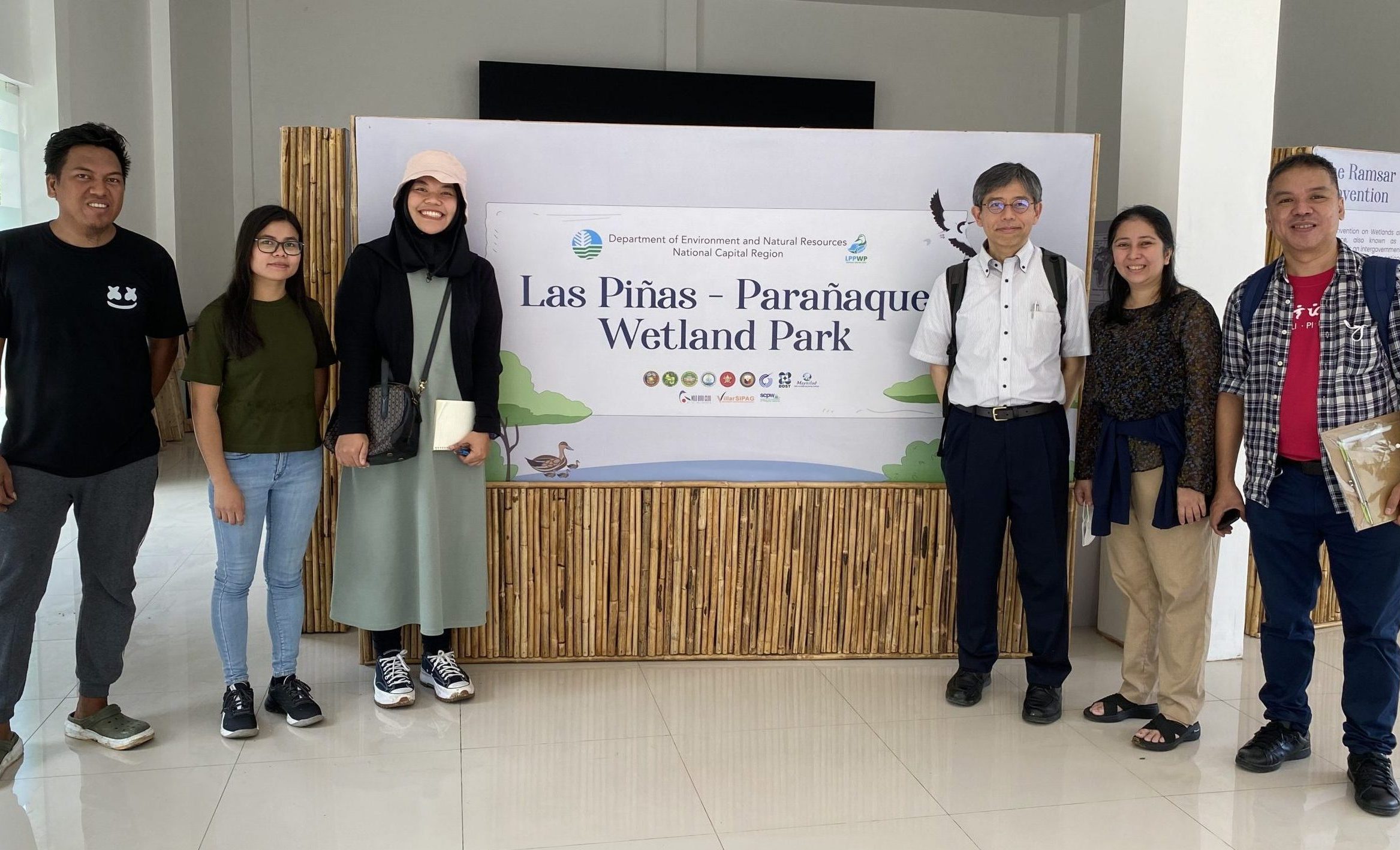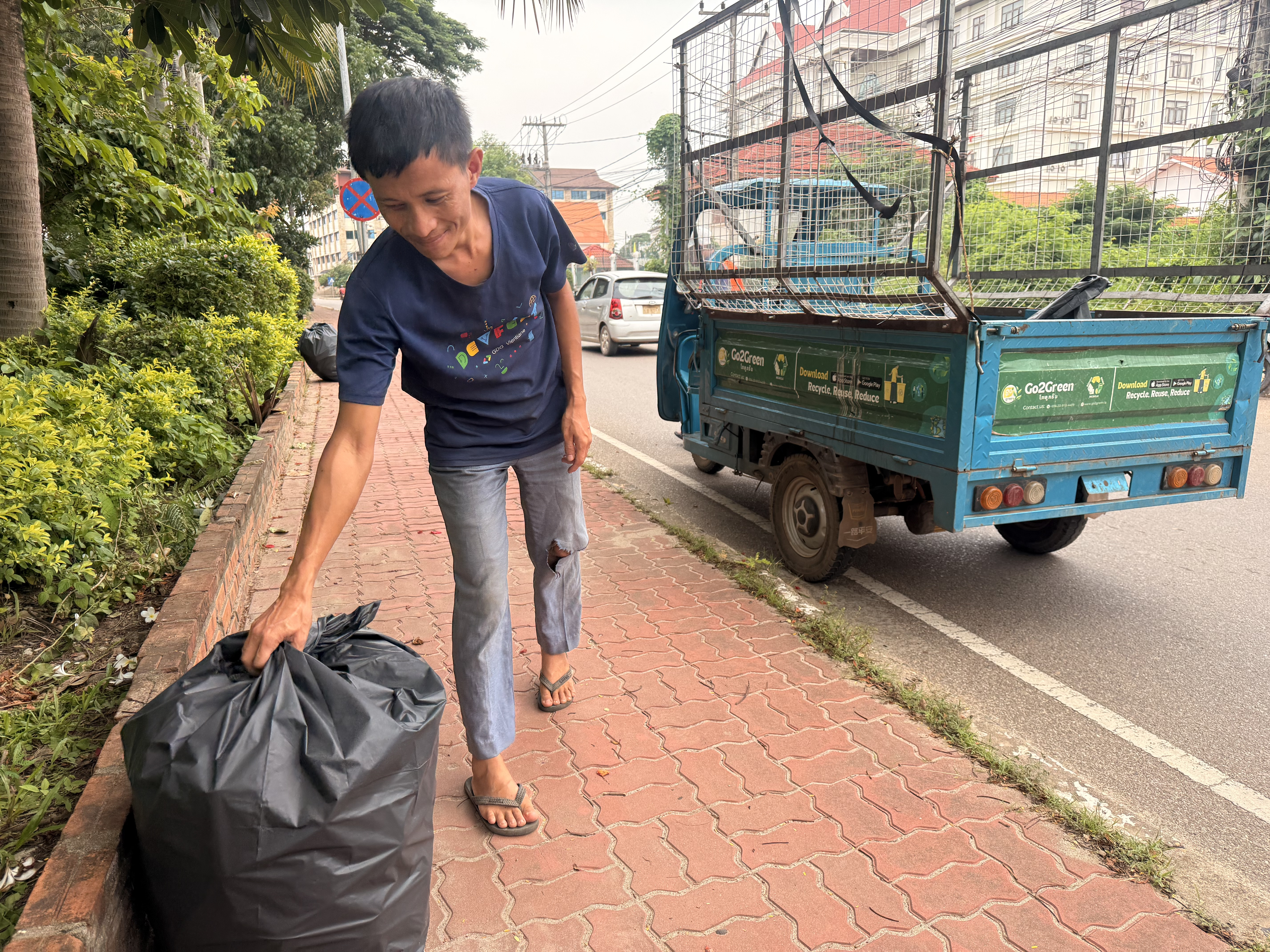

Manila, 15 April 2023: A team from ERIA's Regional Knowledge Centre for Marine Plastic Debris (the Centre) visited Las Piñas-Parañaque Wetland Park (LPPWP) in Metro Manila, the Philippines, to study the degree of plastic pollution in the area.
Manila Bay plays an important role for the East Asian Australasian Flyway (EAAF), the sky highway for birds to escape the harsh northern hemisphere winter. Most of the birds are from Russia, Mongolia, Japan, Korea, and Alaska; and some stay in the Philippines during the winter, while others only take a short break before continuing their journey.
The LPPWP, with a total area of 181,63 hectares, is one of the Philippines' designated Wetlands of International Importance. This recognition is based on the Ramsar Convention, which encourages the conservation and wise use of wetlands through local and national actions, as well as international cooperation.
The LPPWP boasts a range of notable attributes, such as being a habitat for around 5,000 migratory and residential birds. This number encompasses 47 vulnerable migratory species, including the Chinese Egret, and one of the most important resident bird species – the vulnerable Philippine duck. In 2007, the site was named a Critical Habitat for the survival of threatened, restricted-range, and congregate species.
Plastic Pollution Threat
As part of the EAAF, the ecosystem services the LPPWP provides for the migratory birds are of crucial importance. However, land reclamation, water pollution, habitat disturbance, and plastic pollution are just some of the many anthropogenic threats the migratory birds face on their journey.
Plastic pollution, in particular, is visibly present inside the LPPWP. The ERIA team observed layers of plastic waste trapped and accumulated in the mangrove area during its visit. The wetland park's officers said that despite their efforts to regularly clean it up, plastic waste keeps coming back.
'The plastics come from the oceans. The consumption is very high in this country,’ said Ms Janina, from the Department of Environment and Natural Resources (DENR).
Other clean-up activities are also carried out to address the site's plastic pollution; usually performed twice a week by groups which mainly come from schools or local communities. After the waste is collected, it is then picked up by the relevant government authorities.
‘Since the wetland park is located between two cities, Las Piñas and Parañaque, there are two responsible government bodies. For the waste in Las Piñas, it will be picked up by the officers from the municipality. Meanwhile, the waste in Parañaque will be picked up by the officers from the DENR. In the end, all the waste will be disposed [of] in Rizal Provincial Sanitary Landfills,’ said Ms Janina.
To reduce floating plastics in the sea, DENR operates trash boats equipped with a net to catch and collect the floating plastics. During the visit, the team came across some of the boats resting on the shore, either due to the visit coinciding with non-operating hours, or because they were out of order.
Microplastics were also spotted in the LPPWP beach area. According to the officers, dead birds have been reported there in the past, but without the authority to conduct an autopsy, they have no means to determine their cause of death.
‘We cannot be sure whether it was because they ingested microplastics or not. We did not have the authority to do the observation,’ said Ms Janina.
Manila, 15 April 2023: A team from ERIA's Regional Knowledge Centre for Marine Plastic Debris (the Centre) visited Las Piñas-Parañaque Wetland Park (LPPWP) in Metro Manila, the Philippines, to study the degree of plastic pollution in the area.
Manila Bay plays an important role for the East Asian Australasian Flyway (EAAF), the sky highway for birds to escape the harsh northern hemisphere winter. Most of the birds are from Russia, Mongolia, Japan, Korea, and Alaska; and some stay in the Philippines during the winter, while others only take a short break before continuing their journey.
The LPPWP, with a total area of 181,63 hectares, is one of the Philippines' designated Wetlands of International Importance. This recognition is based on the Ramsar Convention, which encourages the conservation and wise use of wetlands through local and national actions, as well as international cooperation.
The LPPWP boasts a range of notable attributes, such as being a habitat for around 5,000 migratory and residential birds. This number encompasses 47 vulnerable migratory species, including the Chinese Egret, and one of the most important resident bird species – the vulnerable Philippine duck. In 2007, the site was named a Critical Habitat for the survival of threatened, restricted-range, and congregate species.
Plastic Pollution Threat
As part of the EAAF, the ecosystem services the LPPWP provides for the migratory birds are of crucial importance. However, land reclamation, water pollution, habitat disturbance, and plastic pollution are just some of the many anthropogenic threats the migratory birds face on their journey.
Plastic pollution, in particular, is visibly present inside the LPPWP. The ERIA team observed layers of plastic waste trapped and accumulated in the mangrove area during its visit. The wetland park's officers said that despite their efforts to regularly clean it up, plastic waste keeps coming back.
'The plastics come from the oceans. The consumption is very high in this country,’ said Ms Janina, from the Department of Environment and Natural Resources (DENR).
Other clean-up activities are also carried out to address the site's plastic pollution; usually performed twice a week by groups which mainly come from schools or local communities. After the waste is collected, it is then picked up by the relevant government authorities.
‘Since the wetland park is located between two cities, Las Piñas and Parañaque, there are two responsible government bodies. For the waste in Las Piñas, it will be picked up by the officers from the municipality. Meanwhile, the waste in Parañaque will be picked up by the officers from the DENR. In the end, all the waste will be disposed [of] in Rizal Provincial Sanitary Landfills,’ said Ms Janina.
To reduce floating plastics in the sea, DENR operates trash boats equipped with a net to catch and collect the floating plastics. During the visit, the team came across some of the boats resting on the shore, either due to the visit coinciding with non-operating hours, or because they were out of order.
Microplastics were also spotted in the LPPWP beach area. According to the officers, dead birds have been reported there in the past, but without the authority to conduct an autopsy, they have no means to determine their cause of death.
‘We cannot be sure whether it was because they ingested microplastics or not. We did not have the authority to do the observation,’ said Ms Janina.

Research Associate



